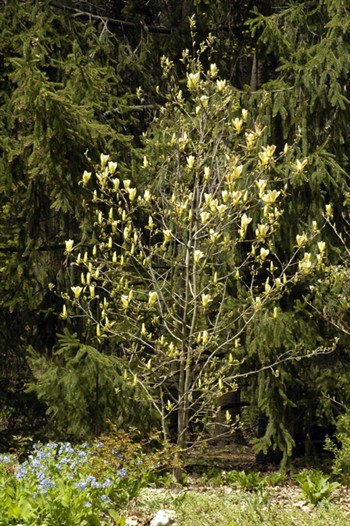Thaw's the time to manage that Magnolia

enlarge this imageFew things are so pretty in bloom as a saucer magnolia (Magnolia x soulangiana). Few are so venerable, either. One of the most ancient flowering plant species, they have changed little over their 100 million year reign -- they must be doing something right! They have been cultivated in gardens for at least 1,400 years.
Age and beauty might even be said to go hand in hand in this species: According to the New Royal Horticultural Society Dictionary of Gardening, "most magnolias become increasingly floriferous with age."
Well timed cuts for saucey stars
I have a friend with an overgrown Magnolia, probably 30
years old. When should you prune it, in December, or in January or
just after it blooms? - L. W. -
We prune
Magnolias in a winter thaw or early August. If it has
to be cut back major-ly and it's vital that it not lose much bloom,
then we do it right after it blooms. If we're going to be cutting
it regularly to keep it smaller than its potential, August is our
first choice. Whenever we cut, we want things to be DRY that day
and for a day after. There's a canker that plagues
Magnolia -- a fungal infection of the branches. The fungus
prospers on moist surfaces so it's not good to prune when the cuts
will remain wet for long periods.
Below: Pink or white Magnolias are better known
than the yellows. Magnolia 'Elizabeth' (below) blooms
later than the pink saucer magnolia, so it is less often touched by
frost.


 The pink saucer magnolias
(M. soulangiana) and these hybrid yellow-blooming
varieties bloom early in spring. So cuts made in winter might
reduce their bloom by the number of flower buds removed in the
clippings.
The pink saucer magnolias
(M. soulangiana) and these hybrid yellow-blooming
varieties bloom early in spring. So cuts made in winter might
reduce their bloom by the number of flower buds removed in the
clippings.
Magnolias that bloom later in summer, or which bloom sporadically
throughout summer may have enough time between spring and bloom
time to develop some flower buds on new wood. One example is
sweetbay magnolia (M. virginiana, below).

